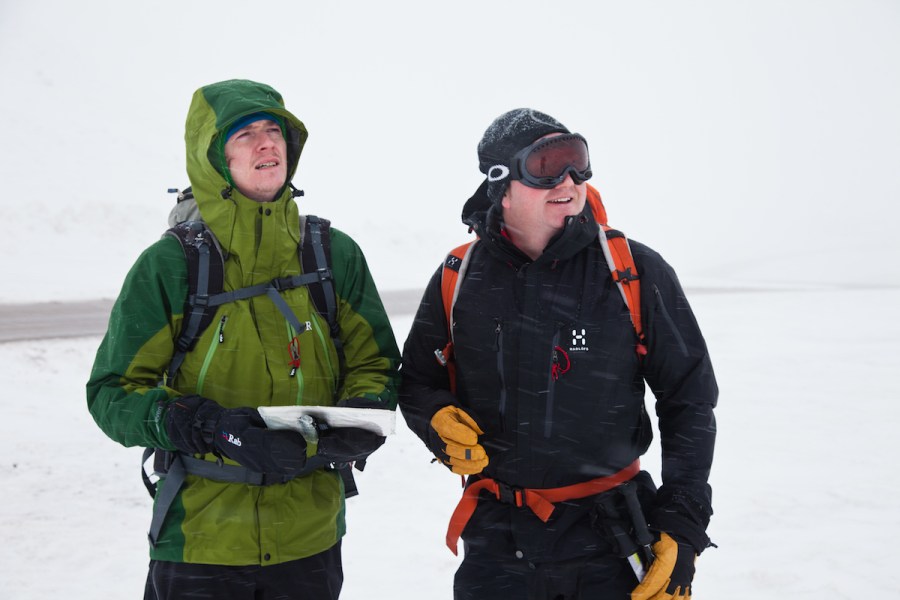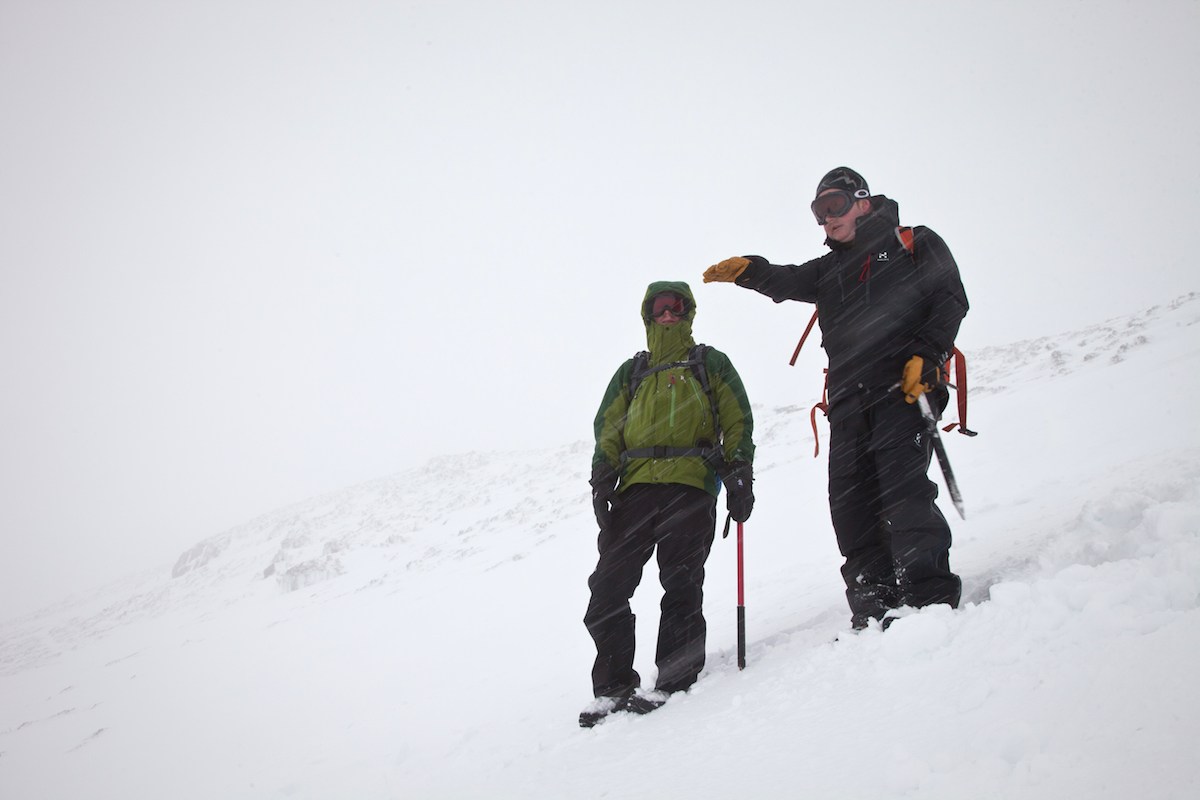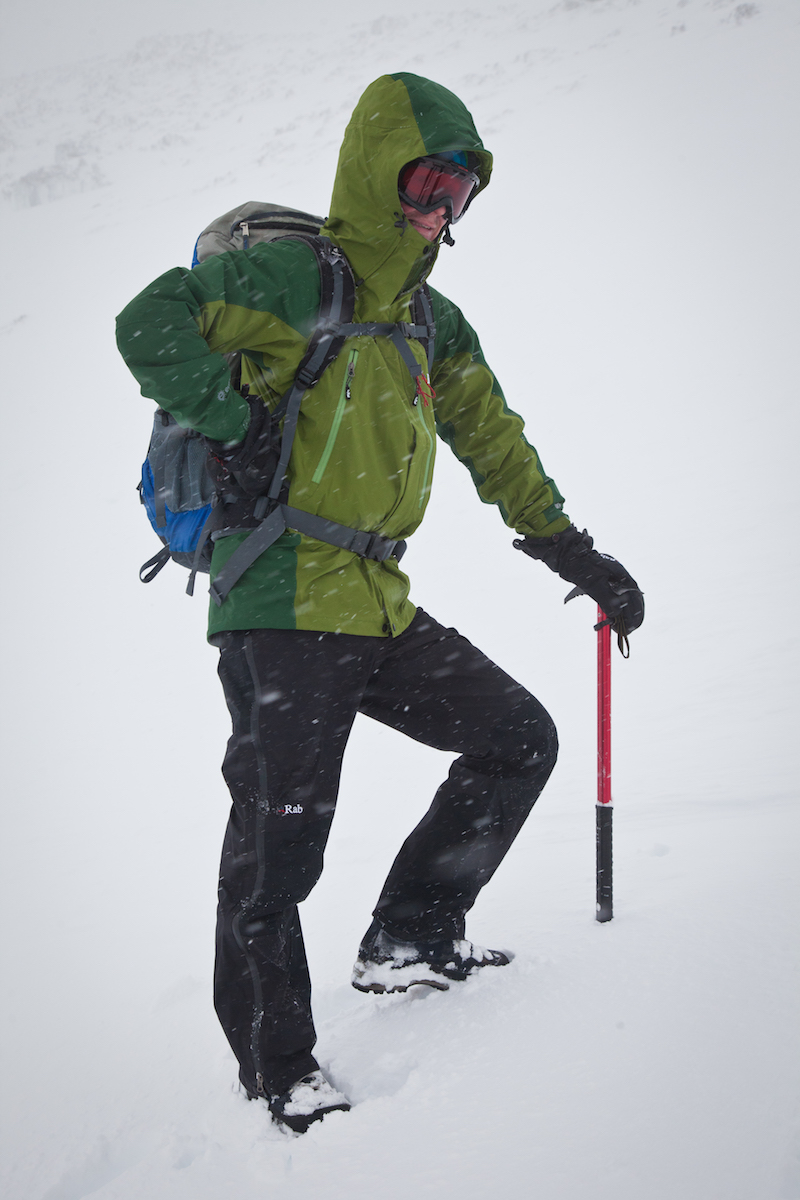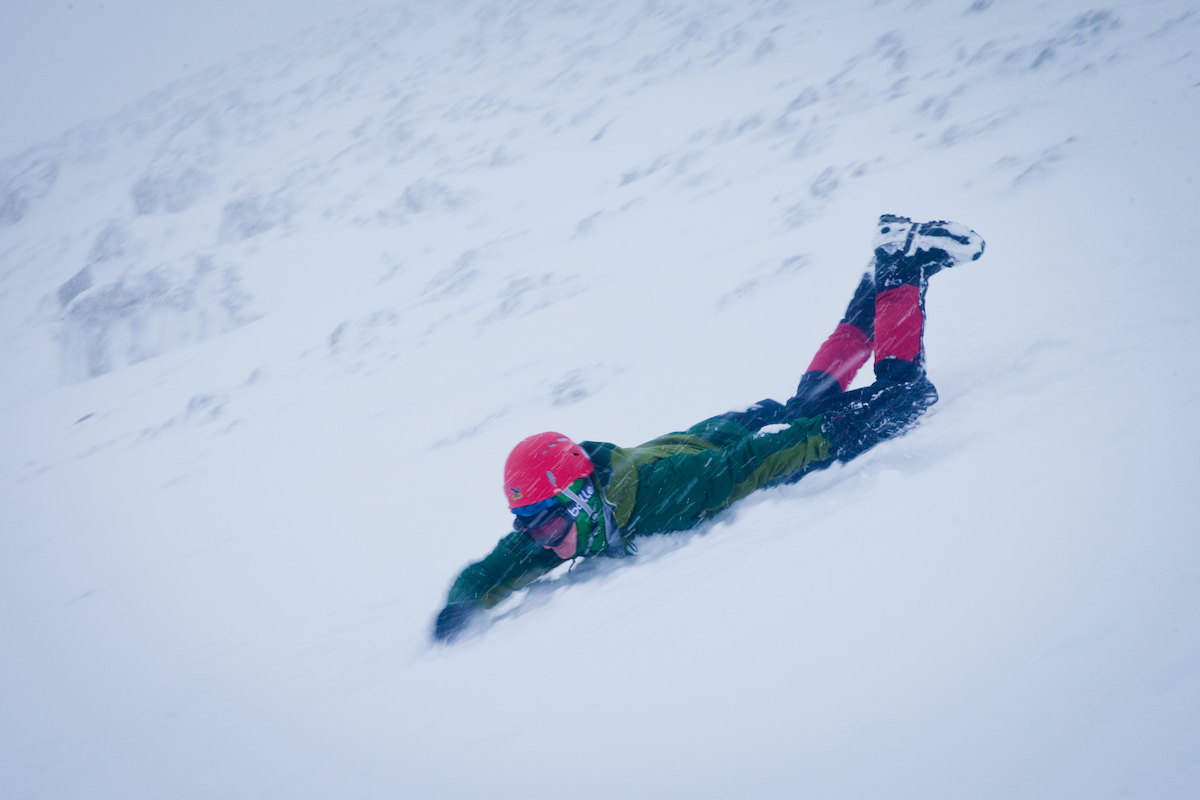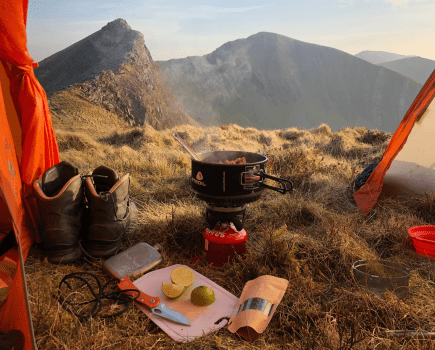Ed Byrne spends a day in the Glenshee hills, brushing up on his winter skills and finding out why crampons are banned in squash courts
Ed Byrne is currently touring Britain with his new show, Spoiler Alert, as part of which he shares some hilarious insights into the trips he’s made into the hills for The Great Outdoors magazine. To celebrate, we are publishing one of his archive features each week as a treat for Ed’s fans and readers of The Great Outdoors.
This feature was first published in our March 2012 issue
“Are you going to learn how to build a snowman?” That was the question I was asked when I said I was going to Scotland to learn some winter skills. I’d love to tell you that this question was asked by a five-year-old child while we played in a sandpit but I’d be lying. It was asked by my friend’s wife, over dinner. She’s a surgeon, by the way. “No,” I replied, “I’m not just going to muck about in the snow; I’m learning serious stuff like how to move safely in the snow and how to avoid avalanches.” Learn how to build a snowman indeed. As if I don’t already know how to build a snowman.
Being out on the hill is a very different proposition when the snow comes. What might be an easy stroll along a broad ridge in summer can become a remake of Touching the Void in winter. Seeing as there are places in Europe where winter conditions persist almost all year round, I thought I should take the time to learn properly how to deal with said conditions. To that end, Stuart Johnston from Climbmts and I took ourselves onto the hill a couple of hundred metres from Glenshee ski centre. At least if things did get a bit Simpson and Yates, help would be close at hand.
Avalanche awareness
The first thing we covered was avalanche awareness. Best to cover avalanches before an avalanche covers you, I always say (actually, I have never said this before but it sounds good). Stuart explained to me about how if you watch the weather and listen to the reports, you can tell which slopes will become danger zones according to the direction in which they’re facing. If the wind is blowing in one direction it will cause the snow to drift against the corresponding face – couple that with the layering effect of sheets of ice with snow on top and you could have a recipe for disaster.
Stuart then showed me how you can examine the profile of a slope by digging out a cross-section of snow and examining its layers to assess the potential danger. He also demonstrated how you can test a slope’s safety by walking across it and then walking back along it above your own footprints and seeing if it gives away. He showed me all these fascinating and technical ways of predicting the danger of an avalanche and then told me a story about how he once, having taken every conceivable precaution, still managed to get caught in one! Obviously, the moral of the tale was “you can’t be too careful” but for me it almost felt like everything I had just learned was in vain. It was a bit like your karate instructor telling you about the time he got mugged.
Crampon capers
Next on the agenda was learning the simple matter of walking up and down a slope that’s covered in snow. You’d think that would be fairly straightforward but you’d be surprised at the plethora of ways to get up and down a mountain covered in the white stuff. Kicking steps, cutting steps, zig-zagging, using the ice axe, feet parallel to the slope, feet perpendicular to the slope… there are almost as many ways of walking on snow as Eskimos have words for snow. The main thing they have in common is they’re all pretty awkward and will have you working up a sweat even in sub-zero temperatures.
Many brand-new pairs of gaiters have been ruined by careless use of crampons, and if you were to wear them with flares then you’d just be asking for trouble
Having learned how to walk, we moved on to how to walk in crampons. As Stuart explained, the important thing with crampons is to wear them when it’s appropriate to do so. While it can be an arse-ache to take them off and put them on all the time, they should really only be worn in icy conditions. Walking on bare rock in crampons isn’t the best idea as it’s not good for the crampons or the rock. And wearing them to a dinner party or similar social function is very much frowned upon in modern society. You’ll find they are also banned on most squash courts.
It’s a lot easier to walk on ice if you’re wearing crampons, but they are tricky tools to get used to. Many brand-new pairs of gaiters have been ruined by careless use of crampons, and if you were to wear them with flares then you’d just be asking for trouble. Stuart showed me a way of walking across an icy patch in crampons that involved my left foot pointing forwards and my right foot kicking out at an angle that made walking a lot safer. The strange thing was that, as well as being a lot safer, it resembled the sort of thing you’d see in a Broadway musical. The exaggerated step technique was like a dance move. Especially with ice axe in my hand like a walking cane, it felt like I should have been in a top-hat-and-tails chorus line. Suddenly, it was all I could do to stop myself from bursting into song. “One singular sensation, every little step she takes….!” but I realised, if I did that, that Stuart might think I wasn’t taking my instruction seriously, so I just sang it in my head.
We had a fun and informative day on the hill, with Stuart showing me various little tips on how to stay out of trouble. Tips like how the rime that builds up on a twig or blade of grass shows the direction the wind has been blowing and therefore where the snow has been drifting and therefore on what faces of the hill avalanches are most likely. Tips like how to gauge visibility by throwing your walking pole in front of you. I felt like I learned a ton of stuff but my favourite part of the day came towards the end, on our way back down, when Stuart gave me my lesson in self-arresting.
Self-arresting does not, as some might expect, involve turning yourself in to the police. As anyone who’s been trained in winter hillwalking techniques will know, it’s a way of using your ice axe to stop yourself from sliding down a mountain. It’s a very important skill to learn. If you fall over on a slope and don’t know how to stop yourself from sliding, you could fall to your death. And if not practised properly, a poor attempt at self-arrest can lead to a serious, ice-axe-induced injury. It’s an incredibly important skill to get right. Having said that, learning to do it is also a lot of fun.
I don’t know how many times I threw myself down that slope but we practised every form of slide the human body can perform. On your back, head first; on your front, feet first; and I made sure I picked up enough speed to ensure the job was being done right. I don’t know what the folk at the Ski Centre must have thought of the sight of a grown man repeatedly throwing himself down a slope without skis or board, but by the time we were finished I had a hood full of snow and a grin from ear to ear. Sometimes learning is fun. A lot more fun than building a lousy snowman.
Stuart Johnston’s top tips for winter skills
1 Planning makes perfect
A small amount of time spent trip-planning will ensure your journey goes smoothly.
2 Be informed
Key knowledge to gather before you go: research the route, know weather and snow conditions, check out the local avalanche reports, take essential equipment and always have route options up your sleeve.
3 Consider your fitness
In winter plan shorter routes, take plenty of food and hydrate properly – this will enhance your comfort and route enjoyment.
4 Know how to travel safely on snow
Snow will generally be more dangerous on the lee side of the slope. If in doubt plan to walk on ridge lines.
5 Keep a checklist
Think about equipment and skills you will need to have squared away to cope with a winter environment.
Stuart Johnston, Climbmts
01887 820117 / climbmts.co.uk
All images © Dougie Cunningham

